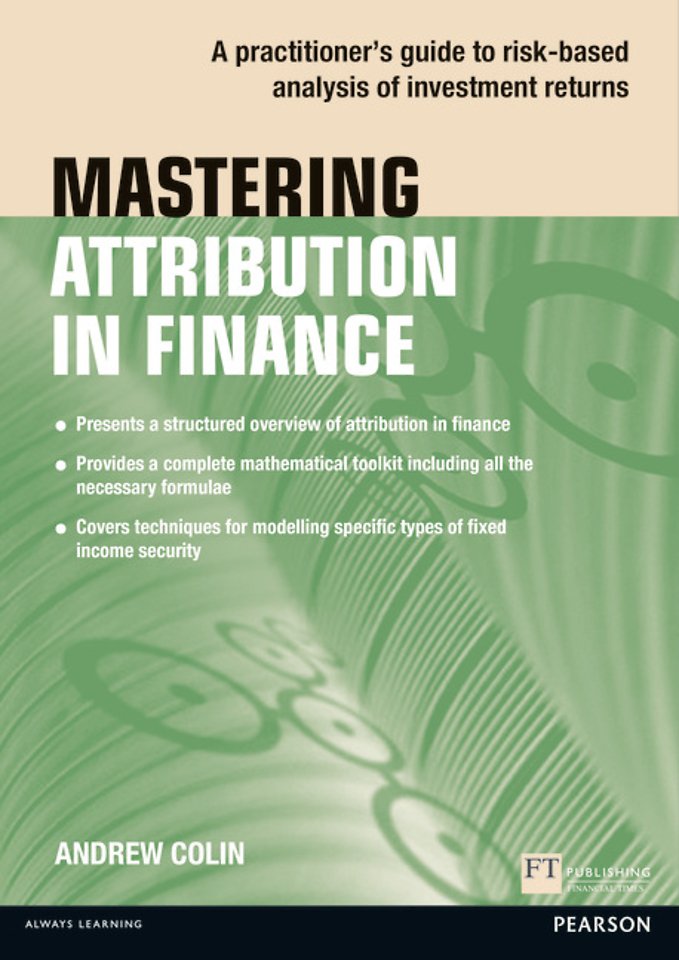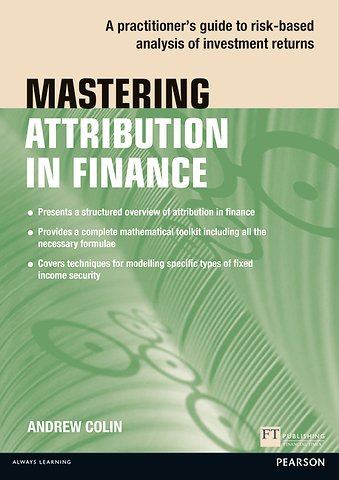Mastering Attribution in Finance
A practitioner's guide to risk-based analysis of investment returns
Samenvatting
‘… a book that brings together the details of attribution, blending both detailed theoretical concepts and practical examples. A must have for any attribution specialist.’
Andrew Kophamel CFA, CIPM, FRM
Head of Performance, Asia Pacific, Aberdeen Asset Management
Attribution in finance is a key investment and asset management process used in managed funds. It measures which investment decisions about the portfolio’s underlying risks worked and which did not, therefore allowing the fund manager to take remedial action if necessary. Attribution is critical business intelligence for anyone involved in selecting, managing or marketing investments.
Mastering Attribution in Finance:
· Presents the key concepts behind portfolio returns for equities and fixed income
· Explains the sources of risk that drive fixed income security returns
· Describes the practical aspects of attribution and the tools used in attribution reporting
· Introduces important approaches such as Brinson attribution, the Campisi model, duration attribution, the Tim Lord model, the Karnosky-Singer attribution model, and parametric and non-parametric yield curve attribution
Specificaties
Inhoudsopgave
Anderen die dit kochten, kochten ook
Net verschenen
Rubrieken
- aanbestedingsrecht
- aansprakelijkheids- en verzekeringsrecht
- accountancy
- algemeen juridisch
- arbeidsrecht
- bank- en effectenrecht
- bestuursrecht
- bouwrecht
- burgerlijk recht en procesrecht
- europees-internationaal recht
- fiscaal recht
- gezondheidsrecht
- insolventierecht
- intellectuele eigendom en ict-recht
- management
- mens en maatschappij
- milieu- en omgevingsrecht
- notarieel recht
- ondernemingsrecht
- pensioenrecht
- personen- en familierecht
- sociale zekerheidsrecht
- staatsrecht
- strafrecht en criminologie
- vastgoed- en huurrecht
- vreemdelingenrecht







